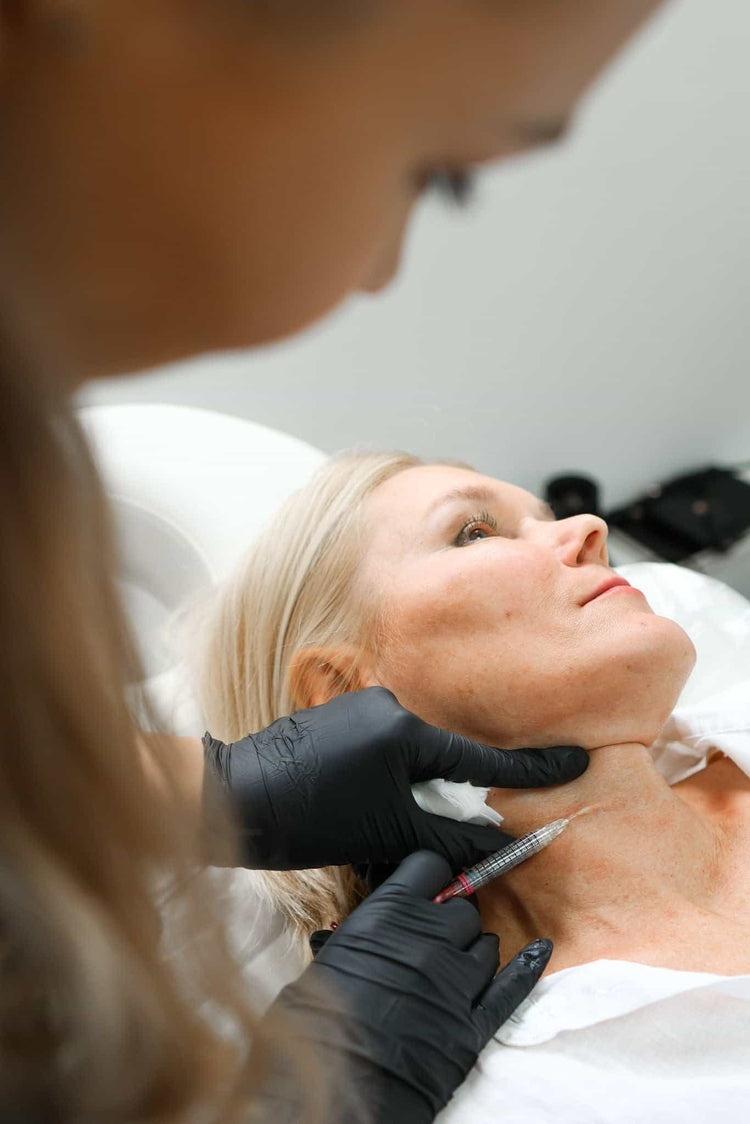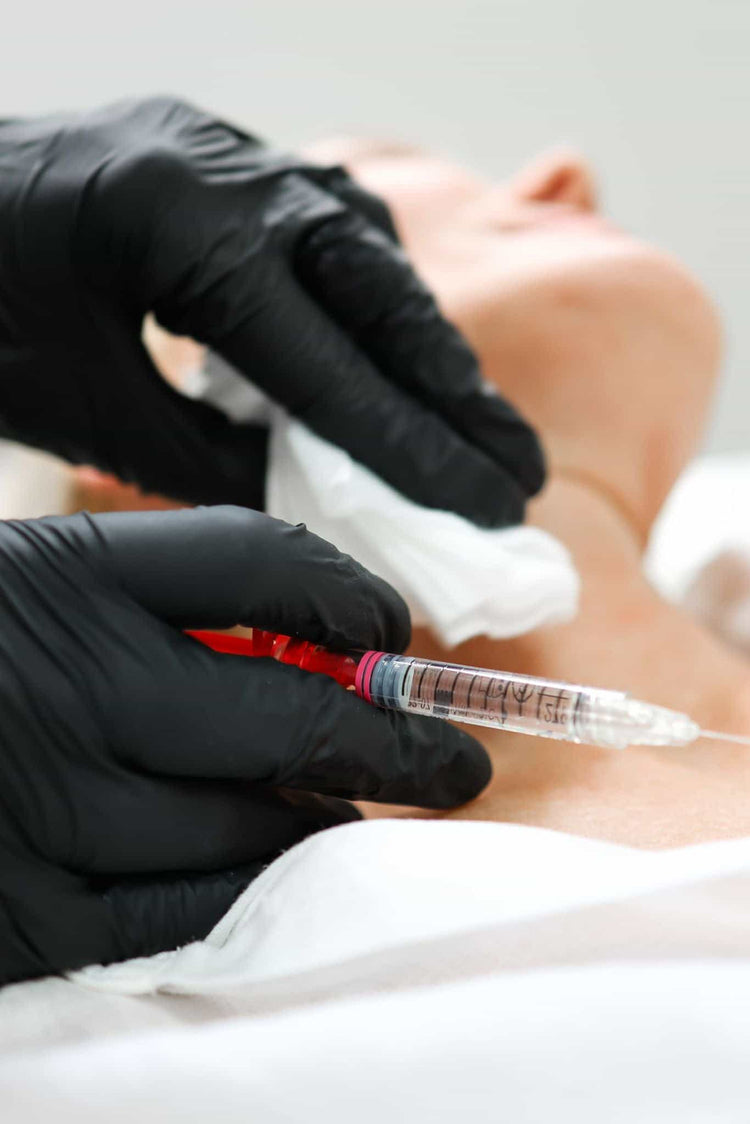Are Neck Line Fillers Safe For All Skin Types In London
April 27, 2025
Skin Types and Filler Reactions
Understanding your skin type and potential reactions to dermal fillers is crucial when considering cosmetic procedures like those targeting the neckline. London’s diverse population brings a wide range of skin types, each with unique characteristics that can influence how well fillers integrate and potentially react.
Sensitive Skin
Skin types are broadly classified as normal, oily, dry, combination, or sensitive. Normal skin is balanced, while oily skin produces excess sebum, dry skin lacks moisture, combination skin has both oily and dry areas, and sensitive skin reacts easily to products and environmental factors.
Fillers typically consist of hyaluronic acid, a substance naturally found in the body. While generally safe, individual reactions can vary based on skin type. Sensitive skin may experience redness, swelling, or itching more prominently than other skin types after filler injections. It’s essential to consult with a qualified practitioner who understands the nuances of different skin types and can tailor treatment accordingly.
In London’s multicultural environment, finding a practitioner experienced in working with diverse skin types is crucial. They will assess your skin carefully, consider your medical history, and discuss potential risks and benefits to ensure a safe and successful outcome.
Normal to Dry Skin
Normal to dry skin often presents as soft, smooth, and lacking shine. While it can appear less reactive than oily or combination skin types, individuals with normal to dry skin may still experience some sensitivity during filler injections. It’s important to note that hydration levels can fluctuate, so maintaining proper skincare routines is crucial.
To minimize any potential reactions, ensure thorough cleansing and preparation of the treatment area prior to the procedure. Aftercare instructions provided by your practitioner are essential for optimal healing and long-lasting results.
Oily Skin
Oily skin tends to have a shiny appearance due to excess sebum production. This can sometimes make it more challenging for fillers to integrate seamlessly, potentially leading to a less natural look or increased risk of lumpiness.
Individuals with oily skin may also be more prone to inflammation or breakout following filler injections. It’s crucial for those with oily skin to work closely with an experienced practitioner who can select appropriate fillers and techniques to minimize these risks. Proper skincare before and after the procedure is also essential.
Considerations for Neckline Fillers in London
When considering neckline fillers in London, understanding your skin type is paramount. London’s diverse population presents a range of skin types, each with its own characteristics that can influence filler integration and potential reactions.
Choosing a Qualified Provider
Choosing a qualified provider experienced in working with diverse skin types is crucial for achieving safe and natural-looking results.
They will assess your individual needs, consider your medical history, and tailor the treatment plan accordingly.
Look for practitioners who have extensive experience with neckline fillers, are certified by recognized bodies, and maintain high standards of hygiene and safety.
Don’t hesitate to ask about their experience with different skin types and inquire about potential risks and benefits associated with the procedure.
Consultation and Assessment
Understanding your skin type is paramount when considering neckline fillers in London. London’s diverse population presents a range of skin types, each with its own characteristics that can influence filler integration and potential reactions.
Skin types are broadly classified as normal, oily, dry, combination, or sensitive. Normal skin is balanced, while oily skin produces excess sebum, dry skin lacks moisture, combination skin has both oily and dry areas, and sensitive skin reacts easily to products and environmental factors.

Fillers typically consist of hyaluronic acid, a substance naturally found in the body. While generally safe, individual reactions can vary based on skin type. Sensitive skin may experience redness, swelling, or itching more prominently than other skin types after filler injections.
Choosing a qualified provider experienced in working with diverse skin types is crucial for achieving safe and natural-looking results. They will assess your individual needs, consider your medical history, and tailor the treatment plan accordingly.
Look for practitioners who have extensive experience with neckline fillers, are certified by recognized bodies, and maintain high standards of hygiene and safety.
Don’t hesitate to ask about their experience with different skin types and inquire about potential risks and benefits associated with the procedure.
Potential Side Effects
Understanding your skin type and its potential reaction to fillers is crucial when considering cosmetic procedures like neckline treatments. London, with its diverse population, offers a wide range of skin types, each with unique characteristics that can influence how fillers integrate and potentially react.

Skin types are broadly categorized as normal, oily, dry, combination, or sensitive. Normal skin is balanced, while oily skin produces excess sebum, dry skin lacks moisture, combination skin has both oily and dry areas, and sensitive skin reacts easily to products and environmental factors.
Fillers typically consist of hyaluronic acid, a substance naturally found in the body. While generally safe, individual responses can vary based on skin type. Sensitive skin may experience redness, swelling, or itching more prominently than other skin types following filler injections.
Finding a practitioner experienced in working with diverse skin types is crucial in London’s multicultural environment. They will thoroughly assess your skin, consider your medical history, and discuss potential risks and benefits to ensure a safe and successful outcome.

Aftercare Instructions
Understanding your skin type and its potential reaction to fillers is crucial when considering cosmetic procedures like neckline treatments. London, with its diverse population, offers a wide range of skin types, each with unique characteristics that can influence how fillers integrate and potentially react.
Skin types are broadly categorized as normal, oily, dry, combination, or sensitive.
- Normal skin is balanced
- Oily skin produces excess sebum
- Dry skin lacks moisture
- Combination skin has both oily and dry areas
- Sensitive skin reacts easily to products and environmental factors.
Fillers typically consist of hyaluronic acid, a substance naturally found in the body. While generally safe, individual responses can vary based on skin type. Sensitive skin may experience redness, swelling, or itching more prominently than other skin types following filler injections.
Aftercare Instructions:
- Avoid touching or rubbing the treated area
- Apply cold compresses to reduce swelling
- Follow your practitioner’s instructions regarding medications and skincare products
- Protect the treated area from excessive sun exposure
- Attend any scheduled follow-up appointments
Long-Term Results and Maintenance
Long-term results with neckline fillers depend on several factors, including skin type, filler type, and individual metabolism. The initial effects may last anywhere from six months to two years, but repeat treatments are generally required to maintain the desired outcome. Proper aftercare is crucial for maximizing longevity and minimizing the risk of complications.
Filler Degradation Over Time
Filler degradation over time varies depending on several factors, including the specific type of hyaluronic acid used, the amount injected, and individual metabolism.
On average, hyaluronic acid fillers gradually break down over time, typically lasting anywhere from 6 to 18 months.
As the filler degrades, the treated area will soften and appear less defined, eventually returning to its pre-treatment state.
Touch-Up Appointments
Long-term results with neckline fillers depend on several factors, including skin type, filler type, and individual metabolism. The initial effects may last anywhere from six months to two years, but repeat treatments are generally required to maintain the desired outcome. Proper aftercare is crucial for maximizing longevity and minimizing the risk of complications.
Filler degradation over time varies depending on several factors, including the specific type of hyaluronic acid used, the amount injected, and individual metabolism.
On average, hyaluronic acid fillers gradually break down over time, typically lasting anywhere from 6 to 18 months.
As the filler degrades, the treated area will soften and appear less defined, eventually returning to its pre-treatment state.
Touch-up appointments are necessary to maintain the desired results.
- These appointments typically occur several months after the initial treatment, depending on the longevity of the filler used.
- During touch-up appointments, additional filler may be injected to replenish lost volume and restore a youthful appearance.
Book your appointment for Neck Line Fillers with Dr. Laura Geige at It’s Me & You Clinic
- What Are The Best CBD Gummy Edibles For Relaxation - December 20, 2025
- Weed Infused Beverages That Won’t Break The Bank - December 18, 2025
- Upper Face Anti Wrinkle Treatment Near Oxshott, Surrey - December 12, 2025
